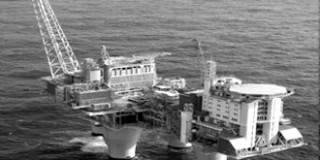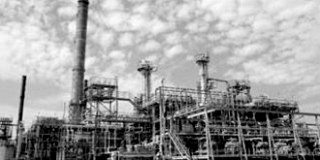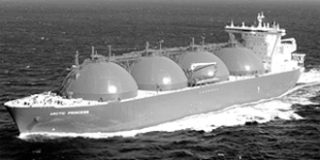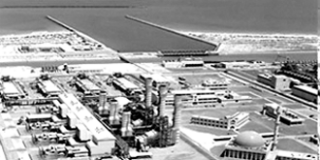WELDED PIPES
Special Piping Materials supplies its clients all over the world with a wide range of welded pipes in a variety of materials from super duplex welded piping to nickel alloy and 6% moly. We ensure that the welded pipes our trusted mills and manufacturers produce are of the high possible quality and they have been fully tested to international standards.
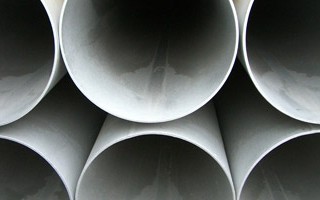
Welded Pipes
Special Piping Materials supplies its clients all over the world with a wide range of welded pipes in a variety of materials from super duplex welded piping to nickel alloy and 6% moly. We ensure that the welded pipes our trusted mills and manufacturers produce are of the high possible quality and they have been fully tested to international standards.
While it is correct that the seam in a welded pipe makes it theoretically weaker than seamless pipe, manufacturing methods and quality assurance procedures are far more superior these days. This means that as long as a welded pipe’s specified tolerances for temperature and pressure aren’t surpassed, there is no reason why is shouldn’t perform just as well as a seamless pipe in a wide array of sectors.
Welded pipe is a great choice of piping product for many different industries such as petrochemical, desalination, oil & gas and chemical processing.
Welded pipe comes in three forms; welded on the outside, welded on the inside or welded on both sides. The commonality is that they all have a seam somewhere! As a leading supplier of stainless steel and alloy welded pipes, we can supply our clients with the following:
- Welded Duplex Pipe
- Welded Super Duplex Pipe
- Welded Stainless Steel Pipe
- Welded Nickel Alloy Pipe
Manufacturing:
Welded pipe manufacturing techniques are thought to have greatly improved over the past few years.
In regard to what type of steel is weldable, austenitic steels are generally the most weldable whereas ferritic steels are weldable in thin sections. Duplex steels are now regarded as fully weldable, but they do require more care than austenitic steels.
The manufacturing process of welded pipe starts by rolling out a steel coil to the desired thickness to form a flat strip or plate. This is then rolled, and the seam of the resultant tube then needs to be welded. There are two main methods for welding. These are as follows:
- Electric Resistance Welding (ERW) Process
In the Electric Resistance Welding (ERW) process, welded pipe is manufactured by a flat sheet of steel being cold-formed into a cylindrical shape. An electrical current is then passed through the two sides of the steel cylinder to heat the edges to a temperature that forces them to form a bond together. This process means that a welding filler material isn’t required.
- Submerged Arc Welding (SAW) Process
The Submerged Arc Welding (SAW) process of creating a welded pipe is often used in industries where thick steel sheets are involved or where long welds are required.
It involves the formation of an arc between a continuously fed electrode and the workpiece. A flux is used to generate protective gases and slag, as well as to add alloying elements to the weld pool. The arc moves along the joint line and as it does so, excess flux is recycled via a hopper. As the arc is completely covered by the flux layer, it is not normally visible during welding and heat loss is also extremely low.
Welded Pipes Finishing
Welded pipe can be finished in a variety of different ways depending on customer requirements and the final application that it is needed for.
These finishes include threaded and coupled ends, threaded end without coupling for diverse diameter lines, and Plain End or Cut Square for more general purposes. Pipes with pre-grooved or bevelled ends can also be supplied for structural-type applications.
For added corrosion protection, different metallic coatings like galvanising, aluminising and claddings can be used. For protection during storage and transportation, non -metallic coatings such as oiling, paints, plastic coating, coal tar, etc. can also be used.
Welded pipes can also go through a process called ‘pickling and passivation’ which means the pipe is dipped in an acid bath to remove the first layer of metal and then it is passed through a water bath. This produces a smoother and more even surface finish that helps to reduce the risk of corrosion.
Applications
These days, welded pipes can be found in nearly every industry. Because welded pipes usually have tighter dimensional tolerances than seamless steel pipes, they are consequentially more suitable in environments where corrosion resistance is a greater factor than pressure containment. Welded tubes and pipes are generally more cost effective than the equivalent seamless versions as well.
Welded pipes are commonly used in major pipeline projects, and they can also be used a lot in the infrastructure for water and sewerage lines.
In the oil and gas industry, welded pipes can be used for shipping oil and gas from oil fields to export terminals, as well as in refineries.
Within the construction industry, welded pipe can be used for scaffoldings, electrical and light poles, structural columns and beams in steel structure buildings like stadium roofs, metro and railway stations.
The chemical industry is another major end-user of welded steel pipe, where they can be used to construct chemical processing lines, industrial sheds and mechanical structures. Other end-user sectors are the mechanical sector, industrial sector, shipbuilding and the energy sectors.
Advantages:
- Cost: Welded pipe is the least expensive of all pipe types.
- Availability: The manufacturing process of welded pipe means that is it quite readily available and a shorter procurement time is required.
- Consistency: The wall thickness of welded pipes is thought to be much more consistent than seamless pipes. This is because the manufacturing of welded pipe starts with a flat sheet of steel, so it is much more controllable.
- Surface quality: The surface of a welded pipe us usually very smooth, thus reducing the possibility of corrosion.
Quality:
All of the welded pipe Special Piping Materials we supply and have in stock is supplied certified ‘welded with X-Ray’ (WXR). This process involves reviewing the whole length of a pipe’s weld seam under a radioscopic exam to ensure full compliance and quality of manufacture and to pick up any potential faults.
As a leading supplier of welded pipe, we offer the following range of different material grades from our stock supplies across the world:
- Welded Stainless Steel Pipe – UNS S31600 / S31603 / 316/L
- Welded Duplex Steel Pipe – UNS S31803 / S32205 /1.4462
- Welded Super Duplex Steel Pipe – UNS S32760 / S32750 / SAF2507 / 1.4501 / 1.4410
- Welded 6% Moly Pipe – UNS S31254 / 1.4574 / N08926
All of the pipes we stock and supply have been fully tested to international standards to ensure we only supply the highest quality products. Everything we supply is manufactured in accordance with the American Society for Testing & Materials (ASTM) Standards) as follows:
- ASTM A928
- ASTM A358
- ASTM A249
- ASTM A409
- ASTM A790
- ASTM B705
The dimensional standard of the seamless pipes we supply are in accordance with the American National Standards Institute (ANSI):
- ANSI B36.19
- ANSI B36.10
In regard to the sizes of welded pipe that we supply: we stock the following size range: 6“ to 24” nominal ball (NB).
In regard to wall thickness of welded pipe that we supply: we hold stock of SCH10S, SCHSTD and SCHXS.
Sourcing specialists
Here at Special Piping Materials, we know how important it for our clients to have the highest quality products to use for their projects and applications. For this reason we only work with a trusted network of mills, manufacturers and shipping companies. This means that we can assure all of our customers that their products will be produced to the right specifications and will be delivered on time.
For more information about our range of welded pipes, contact your SPM sales office.
All Posts, Our People & Offices, UK
At Special Piping Materials (SPM), our success is built on the dedication and expertise of our global teams. Each office plays a vital role in supporting clients across the energy, petrochemical, and industrial sectors, ensuring ... Read More
All Posts, Insights & Views, Stainless Steel
At Special Piping Materials (SPM), innovation, quality, and sustainability are central to everything we do. As industries across the globe work to reduce carbon emissions and operate more responsibly, the materials used in piping systems ... Read More
All Posts, Houston, Our People & Offices
At Special Piping Materials (SPM), our teams across the world work collaboratively to deliver high-quality piping solutions to clients in the energy, mining, and industrial sectors. Our Texas office plays a crucial role in supporting ... Read More
TESTING
All Stock held by Special Piping Materials tested in accordance with respective ASTM standards.
BROCHURE
All Stock held by Special Piping Materials tested in accordance with respective ASTM standards.



 Português do Brasil
Português do Brasil![[:en]Products[:pt]PRODUTOS[:]](https://specialpipingmaterials.com/wp-content/uploads/2015/11/Products-1300x250.jpg)
